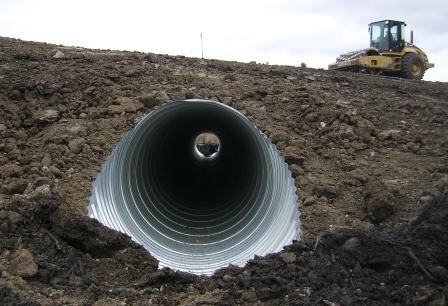Professional Road Construction Solutions for Smooth Travel
Professional Road Construction Solutions for Smooth Travel
Blog Article
Achieve Success With Culvert Installment: Finest Practices Exposed
Installing culverts is an essential facet of framework advancement, needing accuracy and adherence to finest practices for long-lasting success. Whether taking on a brand-new project or preserving existing culverts, the procedure needs careful attention to detail. From the preliminary material option to the lasts of maintenance, each action plays an essential role in the functionality and durability of the culvert system. In this conversation, we will certainly explore crucial techniques, pointers, and standards that can considerably influence the result of culvert setups. Comprehending these vital factors is vital in guaranteeing the structural honesty and efficiency of culverts, making it necessary for specialists and fanatics alike to grasp these foundational principles.
Proper Product Option

Concrete culverts are known for their stamina and toughness, making them appropriate for rush hour areas and huge water flow quantities. Corrugated steel culverts are light-weight and very easy to install, ideal for short-term applications or scenarios needing a quick option. Plastic culverts are lightweight, corrosion-resistant, and cost-efficient, making them a prominent selection for various culvert installments. Composite materials provide a mix of buildings from various products, offering a customizable option for particular task demands. Ultimately, selecting the appropriate product is necessary to guarantee the culvert system operates effectively and has a lengthy life span.
Website Preparation Tips
Effective website prep work is necessary for the effective installation of culverts, ensuring appropriate combination with the surrounding environment and long-term performance. Before beginning the installation procedure, it is essential to carry out an extensive site evaluation to identify the ideal dimension, type, and positioning of the culvert. Cleaning the location of any debris, greenery, or blockages is the initial step in website prep work. This guarantees a clean and degree surface for the culvert to be set up.
Next, the dirt conditions need to be reviewed to assess the stability and load-bearing ability of the ground. Depending upon the soil kind, extra actions such as compaction or support may be necessary to stop working out or moving of the culvert gradually. Appropriate drain factors to consider must likewise be taken into consideration to stop water accumulation around the culvert, which can cause disintegration or architectural damages.
Finally, establishing correct useful site accessibility to the website for building and construction devices and guaranteeing compliance with any type of regulatory requirements are crucial aspects of find site preparation. By following these site preparation ideas, the installation of culverts can be brought out efficiently and efficiently, advertising the long life and capability of the culvert system.
Setup Methods

Firstly, it is necessary to properly measure and mark the location where the culvert will be mounted. The trench needs to be dug to the right deepness and size, taking into account the dimension and kind of culvert being set up.
Next, the culvert ought to be put in the trench complying with the producer's standards. Appropriate positioning is essential for the performance and long life of the culvert. Backfilling the trench with the proper material and condensing it in layers is the last step in the installation procedure. This makes sure the culvert is firmly in location and ready to endure the demands it will face. By adhering to these setup techniques diligently, the culvert will certainly be efficiently set up, adding to the total success of the job.
Maintenance Standards
After completing the mindful setup of culverts adhering to correct methods, adherence to upkeep guidelines is paramount to ensure their longevity and functionality. Assessments need to include checking for debris buildup, erosion around the culvert sides, and any type of signs of deterioration or rust.
In addition, preserving appropriate slope and placement of the culvert is important for efficient water flow and to stop potential blocking. Road construction. Any plant life near the culvert must be managed to stay clear of root breach and obstructions. In locations prone to freezing temperature levels, applying winter season upkeep techniques such as making certain proper water drainage to protect against ice accumulation is vital
Normal upkeep not just extends the life-span of culverts but additionally ensures they operate effectively in managing water flow, decreasing the danger of damages to facilities and bordering areas.
Troubleshooting Common Issues
Addressing usual issues that might arise with culverts needs an organized technique and careful analysis of the underlying reasons. One frequent trouble run into is blockages within the culvert, typically created by debris buildup or debris build-up. To repair this issue, regular evaluations and upkeep are vital to make certain correct performance. Additionally, inappropriate installment resulting in imbalance or inadequate slope can lead to water circulation interruptions or also structural damage. By evaluating the culvert positioning and incline on a regular basis, prospective problems can be determined and corrected immediately.

Final Thought
To conclude, attaining success with culvert setup requires mindful consideration of product choice, thorough website prep work, proper installment strategies, and routine upkeep. By following finest practices and fixing common problems, the integrity and performance of culverts can be made certain. It is necessary to comply with guidelines and suggestions to avoid any type of possible issues and make sure the durability of the culvert system.
Report this page